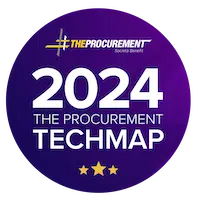Logistics management is never an easy task, especially when orders are peaking. So how do you satisfy customers while keeping costs down? This is the question that every logistics department asks itself.
The solution is to organise the supply chain properly . Applying the lean logistics method can be invaluable. Lean logistics is one of the techniques created by Taiichi Ohno in the 1950s and encompasses a number of different techniques which we will present to you in this guide.
What is Lean Logistics?
A Lean tool
Taiichi Ohno, an industrial engineer at Toyota Motor Corporation, invented an industrial management method called Lean. His aim was to eliminate waste in the factory production cycle in the 1950s. It is based on the“just-in-time” principle.
Overtime ,the lean management principle used in business management has gained ground and been democratised in other industries. Lean is also at the origin of numerous methods applied in different fields. These include :
- the Kaizen method applied in the manufacturing industry,
- the Kanban method for production management,
Lean logistics
This is asupply chain management technique. Its aim is to eliminate unnecessary steps and optimise more important tasks. It therefore focuses on improving :
- flow management
- stock management
- collaboration with suppliers and customers
- safety,
- transport,
- warehousing.
This supply chain methodology makes it possible to implement an efficient and profitable logistics organisation. It also enables us torespond to demands without creating pressure and tension within the team .
The principles of lean logistics
If you want to apply this famous supply chain technique within your company, you need to be familiar with its principles. This logistics tool is based on 5 key stages .
1 – Identification of futile processes and those with added value
The first task is to analyse your main process. The aim is to identify the tasks with high added value and those that require optimisation. This can be done by using various tools such as flow maps or Value Stream Maps.
2 – Identifying opportunities for improvement
In the field of logistics, faulty or unnecessary operations are generally those thatwaste time. It is important to remedy this. So you need to identify opportunities for improvement.
For example, there have beendelivery delays due topoor coordination between transport and warehousing. You need to find a way of improving these operations at all costs. The solution could be :
- adding a few changes to your logistics networks,
- improving your warehousing strategy
- using a more efficienttransport provider, etc
3 – Design a new, optimised process flow
To improve the supply chain, a process must be designed to save time. It must also improve service quality. So how do you go about it? As a logistics manager, you need to make a number of decisions.
It all starts with eliminating superfluous tasks. Next, you need to make changes toyour logistics organisation. For example, you can :
- selecting new suppliers
- work with a new service provider, particularly a transport professional,
- invest in innovative systems to speed up certain processes, such as drawing up quotations or tracking shipments.
4 – Using “pull” strategies
When it comes to improving logistics handling, it is out of the question to neglect stock management. This could influence the total cost of the process. Excess inventory, as is the case when adopting the standard production method , must be avoided .
Pull strategiesare one way of avoiding this. They involve attracting consumers to come and look for the products or services you offer. But they also make it easier for you to respond to their requests.
5 – Standardising new processes
Theprinciple behind lean supply chain management is to improve the current process. The principle is to make changes. Then you have to convince and motivate your teams to adopt them. To do this, you need to help them acquire new habits and skills so that they can become more involved in the process.
How to apply lean logistics
If you are considering applying this methodology, it may be because you have a major problem. This isgenerally awaste of resources. That’s why you need to identify the causes. Then you have to solve the problems that have been detected.


Here are the areas that need to be changed and the solutions to be applied.
Non-essential movements in freight transport
If thereis poor organisation in the warehouse, goods will have to pass through different logistics platforms. The same applies if transport routes are not properly planned.
The lean logistics approach therefore suggests :
- optimise transport route planning by favouring more flexible and competitively priced solutions ,
- reorganise warehouses to avoid excessive movement of goods during order picking and to facilitate loading manoeuvres,
- change transport service providers.
Faulty and repetitive processes that waste time
Successful companies derive significant benefits from their logistics performance. They usually have an experienced team. But that’s not all! They have effective practices in place.
Repetitive and inefficient work is eliminated. Every task in the overall supply chain is done right the first time.And yet these companies are able to provide a quality service at a competitive price.
To eliminate these cyclical and inefficient procedures, it is necessary to adopt a high-performance logistics solution based on Lean methodology. The principle is :
- monitor the flow of goods, which means that you need to check the distribution performance of your service providers,
- develop a plan B, which will enable you to avoid problems such as loss of goods as quickly as possible.
The logisticsteam must ensure that products reach the customer as quickly as possible. This helps reduce costs.
Excessive delays
If tasks are not carried out on time, this will generate delays that could cause additional costs. This iswhy lean supply chain management recommends :
- Determining the standard time to be spent on each activity
- Determining the time actually needed to carry them out.
We need to identify the reasons why certain tasks in the logistics processtake so long to complete . Next, we need to identify ways of saving time, based on the lean approach. The solution is to :
- detect problems early, using state-of-the-art tools,
- analyse warehouse performance.
Overproduction leading to excessive stock levels
Did you know that lean logistics enabled many companies to limit the costs associated with excessive stock during the pandemic ? In fact, they managed to avoid large-scale manufacturing by relying on the agile approach, which consists of producing according to demand. But you also have to manage the logistics of the materials.
So how do we solve the problem?
- Establish close collaboration with suppliers to avoid the costs associated with stocking materials
- Reduce the time spent on logistics operations
- Seek out new, more efficient partners
- Use innovative technologies to save time in carrying out tasks
The benefits of lean logistics
Theprinciple of this methodology is to develop a lean supply chain. This will enable you to improve your logistics service and reduce costs. The benefits of this approach are numerous.
Continuous improvement
Well-organised logistics means you can cope with market fluctuations. In the event of a peak in demand, for example, you can respond easily to buyers’ needs. What’s more, you eliminate repetitive tasks from the process that can cause delays. Supplies of raw materials and delivery of finished products to consumers can be completed quickly.
Optimum dynamism within the supply chain
Lean logistics is an approach that encourages you to adopt technological solutions to improve logistics.
These solutions should help you to :
- link warehousing and production more seamlessly,
- ensure better management of raw materials purchasing through Lean Purchasing.
Better stock management
Lean logistics advocates adapting production to demand. There will be no excessive stocks and storage costs are reduced. But this approach also enables you to reduce commercial and logistical errors. So you can satisfy your customers whatever the circumstances.
To optimise your company’s overall operational efficiency, you can also optimise purchasing management. To do this, we provide you withWeproc software. This SaaS tool offers a user-friendly interface through which you can centralise all your purchases and track them with ease.
You can also track your expenditure in real time and work more effectively with your various suppliers.
Want to learn more about our Weproc procurement management software?
Contact us or request your 15-minute demo below!








